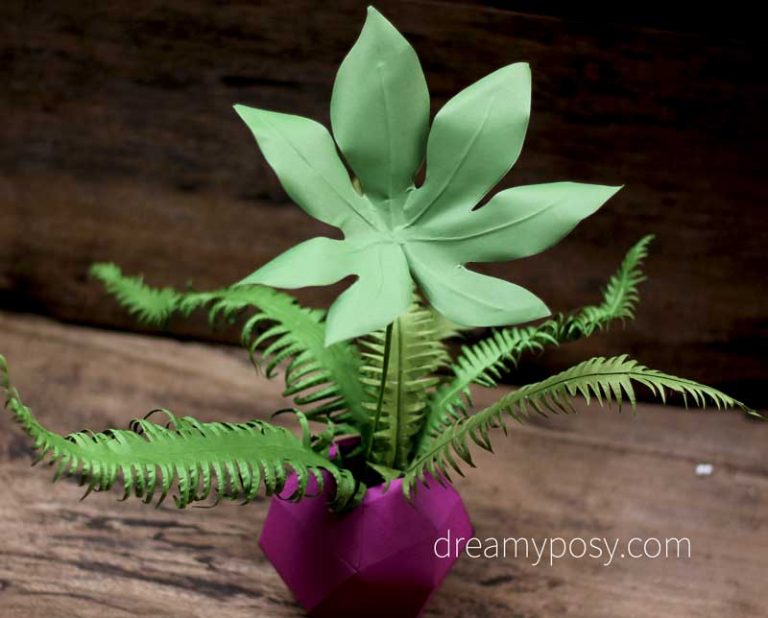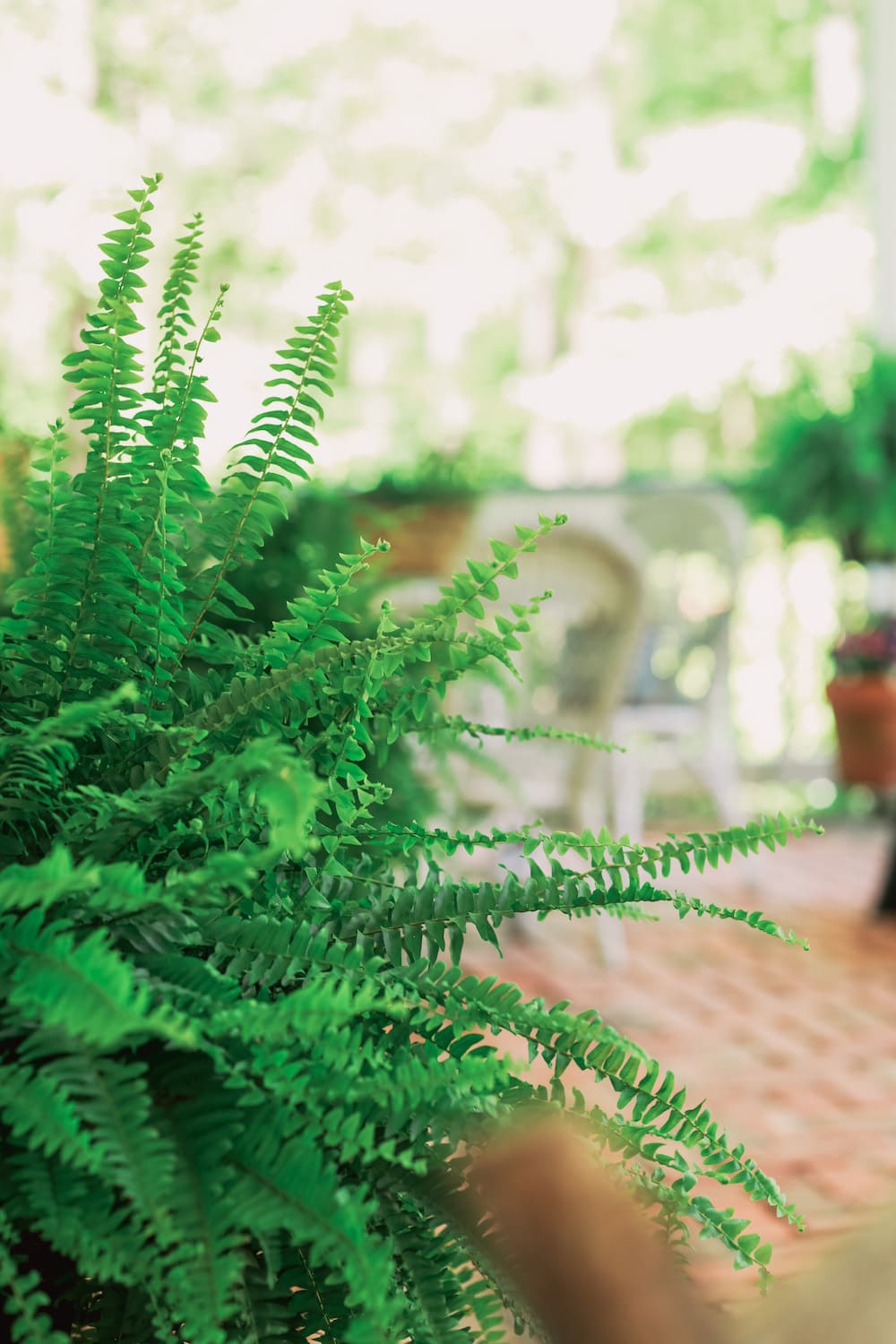Fern care can be tricky. Have you ever watched in dismay as a beautiful, fluffy green fern turned yellow? I have, and it’s a sad thing to see. But then a sweet neighbor of mine shared the secret of the huge, beautiful ferns hanging from her porch. I’m going to share that trick with you in this post. Be sure to watch the video, where I explain it step by step.
Ferns are beautiful graceful plants that can add a lush tropical feel to any indoor or outdoor space. However, over time their fronds can start to look faded, yellowed, or browned. If your ferns are looking a little lackluster, don’t despair! There are several effective ways to restore their vibrant green color and keep them looking healthy and vigorous.
Why Ferns Turn Yellow or Brown
Before diving into solutions, it’s helpful to understand some of the common reasons ferns’ foliage loses its green hue:
-
Insufficient Light Ferns thrive in bright indirect light. Too much shade can cause them to become leggy and pale.
-
Underwatering: If ferns dry out too much between waterings, the fronds will crisp up and turn brown.
-
Overwatering: Excess moisture deprives roots of oxygen, promoting fungal diseases that damage foliage.
-
Low Humidity: Ferns naturally grow in tropical environments with ample moisture. Dry air can make their leaves dull and shriveled.
-
Nutrient Deficiencies: Lack of nutrients like nitrogen, magnesium, and iron leads to chlorosis (yellowing leaves).
-
Salt Buildup: An accumulation of soluble salts in the soil from tap water or excessive fertilizer causes browning tips.
-
Pests: Insects like scale, mealybugs, and spider mites suck nutrients and moisture from fronds.
-
Diseases: Bacterial and fungal problems like root rot can spread, killing fronds.
By identifying and addressing the specific underlying issue, you can nurse your ferns back to health and maintain their verdant color.
Adjust Care for Greener Ferns
Often the simplest way to rejuvenate fading ferns is to assess and improve their basic care. Here are some easy tweaks to optimize growing conditions:
-
Light: Move ferns to a brighter location or use supplemental lighting. East or west-facing windows are ideal. Rotate the plant periodically so all sides get light.
-
Water: Check soil moisture frequently and water when the top inch becomes dry. Water thoroughly until it drains from the bottom, then tip the pot to empty the saucer.
-
Humidity: Use a humidifier, pebble tray, or regular misting to keep humidity above 50%. Group plants together to create a moist microclimate.
-
Air Circulation: Stagnant air encourages fungal disease. Use fans to keep air gently circulating around ferns.
-
Temperature: Maintain temperatures between 65-80°F. Avoid drafty locations.
-
Soil: Repot in fresh, well-draining potting mix when roots become crowded. Annually replace the top inch of soil.
-
Fertilizer: Apply a balanced houseplant fertilizer at half strength every 2-4 weeks in the spring and summer.
-
Pruning: Remove any dead, diseased, or damaged fronds with sterilized shears to improve air circulation.
Use Epsom Salts
One of the fastest ways to green up yellowing or browning ferns is by applying Epsom salt (magnesium sulfate). This provides plants with magnesium, an essential mineral for chlorophyll production. Sulfur also helps with enzyme functions and nutrient uptake.
Dissolve 1-2 tablespoons Epsom salts per gallon of water and apply it as a foliar spray on the fern’s fronds. Or, add 1 teaspoon directly to the soil every couple months. The magnesium will be quickly absorbed by the plant. Within a week or two, you should see marked improvement in the greenery.
Apply Chelated Iron
Iron deficiency is another common cause of chlorosis in ferns. Chelated iron is a supplement that corrects this issue. It’s readily available to plant roots for rapid absorption and greening.
Follow label directions to mix chelated iron into water. Use it to drench ferns’ soil or spray it directly on yellowed foliage. Apply it every few weeks until the vibrant color returns.
Soil pH above 6.5 can interfere with iron uptake, so test your soil if iron isn’t effective. Acidifying fertilizers or amendments may be needed for iron-deficient plants.
Fix Nutrient Imbalances
While quick fixes like Epsom salts and iron supplements can perk up fading ferns in the short-term, addressing soil nutrient imbalances is key for long-term solutions.
Use a soil testing kit to check the pH and levels of essential macronutrients like nitrogen, phosphorus and potassium (NPK). Follow recommendations to correct imbalances. For example, applying nitrogen fertilizer or sulfur to lower pH if too alkaline.
When shopping for fertilizers, look for options specifically formulated for ferns and acidic-loving plants. Apply at regular intervals over the growing season.
Control Pests
Insect infestations can rapidly drain ferns of moisture and nutrients. Check under fronds routinely for signs like webbing, sticky residue or slow-moving bugs. Isolate affected plants. Remove pests with diluted soap spray or neem oil. Repeat applications may be needed.
For heavy infestations, insecticidal soap or horticultural oil can smother and kill bugs. Be sure to test on a small area first, as ferns are sensitive. Maintaining optimal grow conditions also helps prevent future pest issues.
Manage Diseases
Like pests, fungal or bacterial diseases show up on ferns’ foliage as spots, mushy areas or distorted growth. Isolate and prune affected parts immediately.
Improve air circulation and reduce watering frequency to make conditions less favorable for disease. Disinfect shears after each cut to prevent spreading.
Fungicides containing chlorothalonil are effective on many fern pathogens when applied preventatively. Ensure proper coverage of fronds’ undersides where problems start.
Propagate with Offsets
Some fern species readily grow plantlets or “offsets” from their root system, allowing you to propagate new plants. Carefully divide these offsets from the mother plant. Pot them in small containers using well-draining houseplant soil mix.
Keep newly propagated ferns warm and humid while they establish. Their young fronds will be light green initially but deepen as the new plant matures. In a few months, you’ll have vibrant new ferns!
Know When to Prune
As individual fronds naturally age and die off, pruning helps maintain active growth and fullness. But improper pruning at the wrong time negatively impacts regrowth.
Only cut fronds that are entirely dead or damaged. Avoid removing green fronds, especially the central crown from which new leaves emerge.
Prune ferns in spring as temperatures warm up to stimulate fresh growth. Cease pruning in fall to allow plants to enter dormancy. Disinfect shears after each cut.
Give Them Time to Adjust
Finally, remember that ferns often need time to adapt and recover from any changes in environment or care regime. Don’t be discouraged if improvements are gradual over several weeks. Consistently providing proper conditions will ensure your ferns revert to their lush, brilliant green selves.

How often do you water ferns in hanging baskets?
Fern plants in hanging baskets beautify a room or porch if they are healthy. If your ferns are getting yellow, you may be watering too little or too much — but it’s probably too much! The ideal watering schedule will vary, depending on humidity levels. Water the fern when the surface soil starts to feel dry to the touch.
An occasional misting of fern fronds is great for the plant — ferns thrive on humidity.

Too Much or Too Little Light
Another big factor in fern care is, of course, light conditions: ferns thrive in the shade, but they also need some indirect light periodically through the day. You can acclimate an indoor plant to more light by bringing it outside for increasingly longer periods over time instead instead of all at once.

Like other plants, ferns need occasional food to replenish the soil mix. You can use a good houseplant liquid fertilizer or slow-release fertilizer to ensure that the ferns get enough (but not too much) nitrogen and minerals.
Yellowing ferns may be a sign that they’re not getting enough of the nutrients they need. Besides the right amount of plant food, how do you solve this problem?
I Stopped Killing Ferns Once I Learned This
FAQ
Why are my ferns turning pale green?
Pale or Faded Fronds: Lacklustre-looking fronds are often a sign of incorrect lighting. Fern fronds either turn pale when exposed to direct light or when they receive too little light, which affect chlorophyll production.
What is the best natural fertilizer for ferns?
In nature, they get the nutrients they need from fallen leaves or evergreen needles and rainwater running off their tree companions. The best thing to try if ferns look pale and limp is to add organic material like peat, leaf mold, or worm castings around the root zone.
How do I keep my ferns from turning brown?
How often should I add Epsom salt to ferns?
If you want to keep your ferns really, really green, it’s one tablespoon of Epsom salt for a cup of water. And I do it like. once a month or so.Jul 9, 2023
